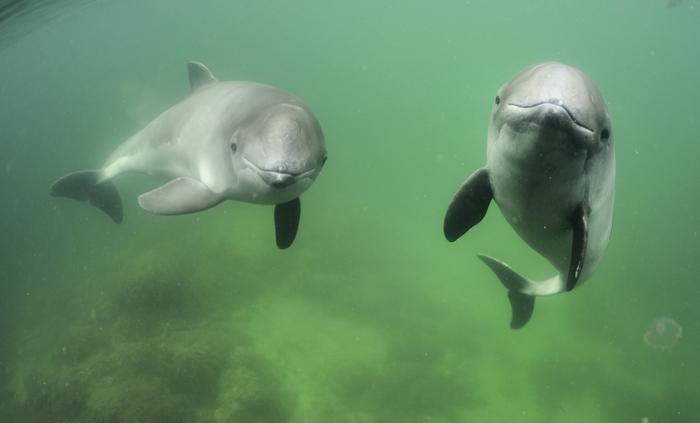In the picturesque Danish coastal waters, summer brings a flurry of activity as locals take to the sea for water skiing, fishing, and leisurely rides through the bays and fjords. While humans enjoy their time on the water, the harbor porpoise (Phocoena phocoena), one of eight extant species of porpoise and one of the smallest species of cetacean, faces a growing threat to its survival.
As its name implies, the harbor porpoise stays close to coastal areas or river estuaries, making it the most familiar porpoise to whale watchers. This porpoise often ventures up rivers and has been seen hundreds of kilometres from the sea. The species may be polytypic, with geographically distinct populations representing distinct races: P. p. phocoena in the North Atlantic and West Africa, P. p. relicta in the Black Sea and Sea of Azov, an unnamed population in the northwestern Pacific, and P. p. vomerina in the northeastern Pacific.
Postdoc Laia Rojano Doñate from the Department of Ecoscience at Aarhus University explains that the more motor boats speeding noisily around, the more the harbor porpoises are disturbed. This disturbance can have severe consequences for these animals, as they need to spend around 60 percent of their time hunting small fish to maintain their energy levels.
“Harbor porpoises spend a lot of energy in a day. Not because they spend it hunting for fish, but because they need it to stay warm,” says Rojano Doñate. “Because they live in cold waters, it takes a lot of energy for them to thermoregulate. That’s why it’s a big problem if they are disturbed by motor boats and stop eating.”
The Constant Presence of Motor Boats
Tracking devices placed on several harbor porpoises by Rojano Doñate and her colleagues have revealed the extent of the problem. In 2018, they found that the animals were exposed to the frequencies of motor boats 80 percent of the time. This constant disturbance can lead to the harbor porpoises stopping their hunting behavior, which, if it happens frequently, can be fatal.
The harbor porpoise population in Kattegat, once thought to be stable at around 40,000 individuals, has now dwindled to just 14,000. The decline is attributed to a combination of factors, including fewer and smaller fish in the sea, pollution, getting caught in fishing nets, and the growing grey seal population that preys on the porpoises.
To help protect the harbor porpoises, Rojano Doñate suggests that people change their habits when out on the water. Establishing zones where motor boats are prohibited and avoiding erratic speeding up and slowing down can make a significant difference for these animals.
As summer approaches and more boats take to the sea, it is crucial to remember the impact our activities can have on the delicate balance of marine life. By being mindful of our actions, we can help ensure the survival of the harbor porpoise and preserve the beauty of our coastal waters for generations to come.


